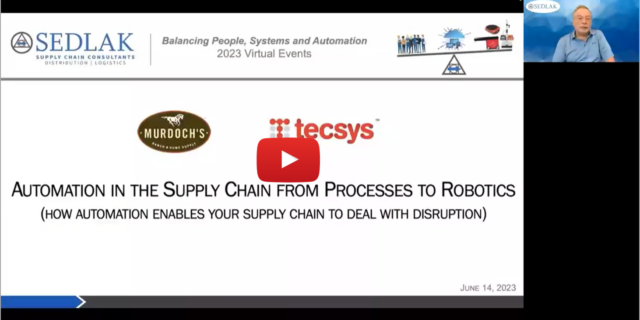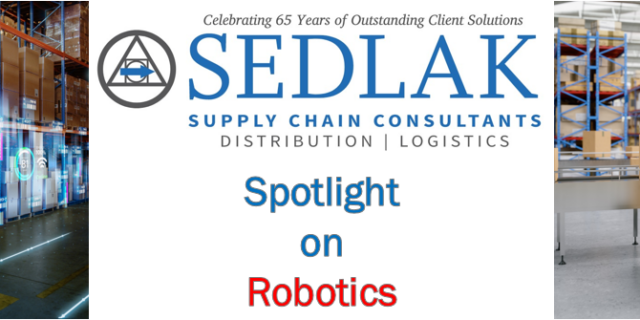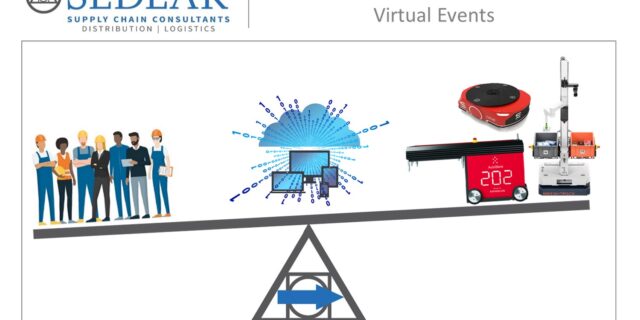Stretching the Boundaries of Security: MHE in Healthcare
March 1, 2016 By: Senior Management | Topics: Healthcare, Material Handling Systems SolutionsIn today’s healthcare world, especially in pharmaceuticals, security often reigns paramount in decision-making processes. Interestingly, in one of the most mundane of operational processes in the supply chain, pallet “wrapping”, options exist that have dramatic effects on the “cost of security” trade off. As technologies advance and requirements expand, it may be time to reconsider something as basic as pallet wrapping. Let’s stretch our thinking for a moment…
Most distribution centers in the healthcare environment have a lot of nuances when compared to other industries – temperature controls, security cages, controlled substances, lot controls and now track and trace and who knows what else is coming…controls, controls, controls. And most healthcare companies when shipping pallets use the same pallet stabilization processes and technologies that just about every other company in the world uses…the spiral stretch wrapper. This basic piece of material handling equipment is often a foregone conclusion.
In most distribution environments, it’s not whether or not you need a stretch wrapper, it’s which one do you get? The small, slow portable one that costs less than $10,000 or one of the fancy, expensive ones with rotary arms, programmable patterns, high speeds and other options that will make your head spin (sorry about that…pun not intended).
As any warehouse supervisor knows, it’s not the “standard” processes that eat away at your precious time, it’s all the exceptions. When I was supervising warehouse operations, my major nemesis was anything involving stretch wrap (and bar code read rates). One of the first warehouses I supervised was highly automated. In this environment, stretch wrap “tails” wreaked havoc. I was often called to weigh stations, induction stations, AS/RS crane aisles, and AGV error terminals only to find these wagging tails that tripped sensors, jammed conveyors or otherwise upset the apple cart. In more manual environments the extent of the nuisance may not have been so dramatic but similar issues existed, and sometimes it wasn’t the stretch wrap consuming my time but that darn stretch wrap machine – some of them just aren’t that reliable or simple to use.
Luckily, back in the late 80s, stretch hood technology was introduced. This technology was initially popular in businesses that could justify the somewhat high equipment costs with the benefits of the technology – speed, stability, weather protection, reliability and unique accommodations for products that “settle” – think cement, aggregates and other bagged products.
Stretch hood applications replaced many heat-shrink hooding applications because of improved cost (better reliability and higher speed) and safety characteristics (less fire risk and insurance costs). Stretch hooding has been slow to replace traditional spiral stretch wrap applications to date because of historically higher equipment and film costs, lack of portability and the size of the equipment.
Interestingly, stretch hood technologies continue to improve. The initial equipment costs and film costs keep coming down, the machines are getting smaller and more modular and their speed and reliability continue to improve the cost/benefit equation.
In the healthcare environment, a very real benefit of improved security and tamper evidence clearly exists. While it is very difficult to tell if a stretch wrapped pallet was tampered with (tell tail or not), it is very obvious to tell when a stretch hooded pallet has been corrupted – it’s impossible to “re-wrap”. This benefit alone makes a stretch hood option worth considering in environments that call for security and tamper evidence. When combined with improved reliability, lower maintenance costs, higher speeds, flexible labeling and bar coding options, sustainability benefits and a few other simple pleasures across the supply chain, stretch hooding applications may just “wrap up” the selection of a pallet packaging/stabilizing approach.
Sedlak has over 55 years of experience in providing independent and innovative material handling solutions to companies worldwide. If you would like more information on how we can help your business, contact us by filling out the form below.





